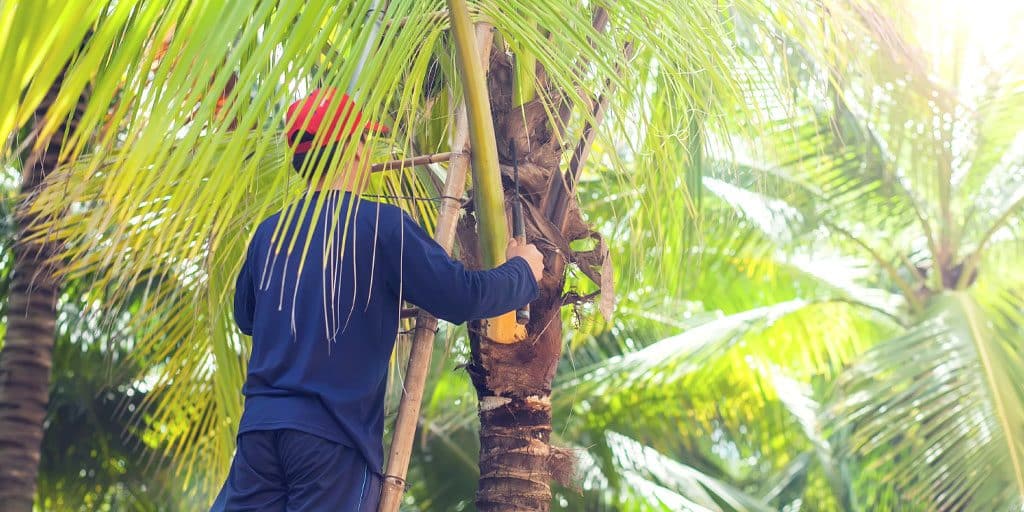Gardening enthusiasts know that proper pruning is essential for optimal growth of palm trees. But how do you go about trimming tropics? In this article, we will discuss the techniques and tips necessary for properly pruning your palms to keep them healthy and flourishing.
From selecting the right time to make cuts, to understanding what kind of tools are needed, this guide has all the information you need to get started with trimming tropics. Well also explore why it’s important to be mindful when caring for these special plants so they can reach their full potential.
Join us as we take a closer look at trimming tropics and learn how best to care for your tropical palms!
Understanding the Basics of Pruning Palm Trees

Pruning is an essential step in ensuring optimal growth and health for your palm trees. To begin, it’s important to understand the basics of pruning before jumping into any project.
Pruning can be done in a variety of ways depending on the type of tree you have and how much maintenance you’re willing to do. For instance, some palms require only light trimming while others may need more aggressive shaping or removal of excess fronds and stems.
It’s also important to know when the best time to prune is; for most types of palms, this should occur during late spring or early summer when new foliage begins appearing on the tree branches. Knowing what tools are needed for pruning will help make sure you get started right – items like shears, loppers, pole saws, hedge clippers, and hand-held power trimmers can all be used but selecting the right tool depends on how much work needs doing.
Finally, understanding where cuts should be made is key; removing dead leaves from lower parts of branches keeps them healthy while trimming higher up helps control size and shape. With these simple steps taken care of correctly, your palm trees will stay looking great!
Identifying Types of Palm Trees and Their Pruning Needs

Pruning palm trees is a necessary step to ensure healthy and optimal growth, but it can be difficult to identify the exact type of tree one has and its pruning needs. While there are many different species of palms, some common ones include fan palms, fishtail palms and Washingtonia robusta. Fan palms feature large leaves that come in shades of green or gray-green.
They require occasional trimming during their growing season from spring through fall. Fishtail palms have frond-like leaves with sawtooth edges that give them a “fishtail” shape; they should only be trimmed when needed as too much pruning can cause the plant to weaken over time.
Finally, Washingtonia robusta is popular for landscaping because they grow quickly; while pruning isn’t required for this type of palm tree if done correctly it will improve the overall appearance and health of your plants. Identifying the type of palm tree you have is key to understanding its pruning needs so you can enjoy beautiful foliage year-round!
Preparing to Trim Your Palm Tree
Preparing to trim your palm tree is an essential step in keeping it healthy and promoting optimal growth. Before you begin, there are a few things to consider.
First, decide what type of cut you’d like to make: whether it be removing any dead or damaged fronds, thinning out the canopy, or even reshaping the entire tree. You’ll also want to plan for where all that trimmings will go-a pile of debris can quickly become a safety hazard in no time! Finally, think about how much pruning you’d like to do-overzealous cutting could lead to stunted growth and unhealthy foliage. With these considerations in mind and with proper preparation steps taken beforehand, you’re ready for a successful pruning job on your beloved palm tree!
Conclusion

Pruning a palm tree is an important part of its care and maintenance. It helps promote optimal growth, remove dead or damaged fronds, and maintain the desired shape and size for your landscape.
It’s best to trim palm trees in late spring or early summer when new growth begins but can also be done in winter if necessary. Pruning should include removing any old, dead fronds as well as shaping the canopy by removing excess lateral branches.
To ensure healthy growth, always use sharp tools that have been recently sterilized with alcohol and make sure not to prune more than one-third of the foliage at once. With proper pruning techniques, you can enjoy a beautiful palm tree for many years to come!




